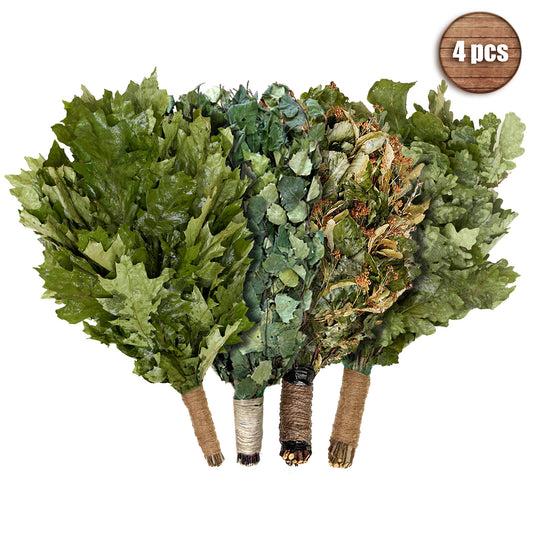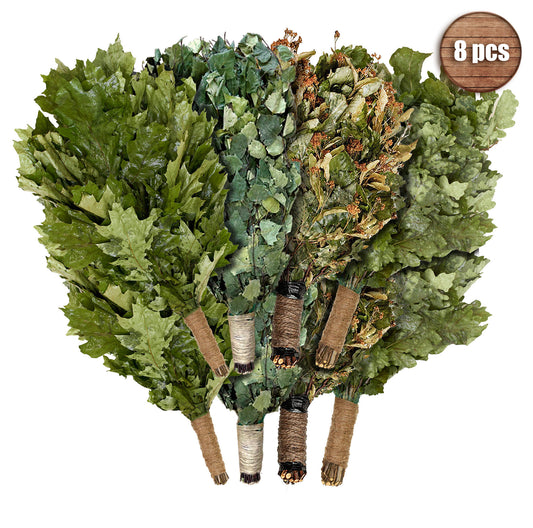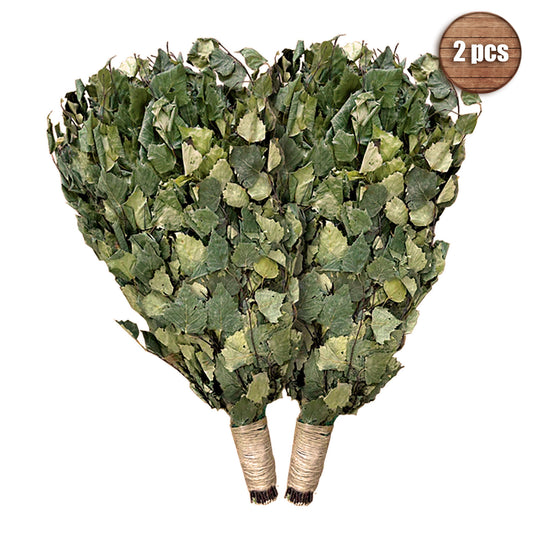
Natural vs. Synthetic Materials in Sauna Accessories
Share
The material you choose for sauna accessories can change how comfortable and practical your sauna time feels. Some materials handle heat and moisture better, while others are easier to keep clean or last longer.
When looking for the best material for sauna use, it’s helpful to know how natural and synthetic options actually perform. Natural sauna materials like wood, linen, or bamboo are often softer to the touch and let air move more freely. They warm up gently and usually feel better against the skin. Synthetic sauna accessories are more about strength and easy care — they handle heat and moisture without much effort and don’t wear out as quickly.
Both choices work, but they offer different benefits. In this article, we’ll go through the key points of sauna natural vs synthetic materials to help you find what fits best for your sauna routine.
Understanding the Differences Between Natural and Synthetic Materials
Sauna accessories can be made from a wide range of materials, and each type behaves differently when exposed to heat, steam, and moisture. Natural sauna materials and synthetic sauna accessories offer distinct qualities that affect how comfortable, safe, and practical the accessories are during use.
Natural materials tend to absorb heat more slowly and often feel better against the skin. They usually offer good ventilation and work well for people who prefer simple, traditional items. Synthetic materials are more resistant to moisture, dry faster, and can handle frequent use without wearing out quickly. The choice between sauna natural vs synthetic often depends on what you need most — comfort, durability, or easy care.
Benefits of Natural Sauna Materials
Many sauna users prefer natural sauna materials because they have a long history of safe and comfortable use. Common options include wood, linen, felt, and bamboo. These materials usually stay cooler to the touch, which helps prevent burns and makes handling accessories more comfortable, even during long sessions.
Wooden sauna buckets and ladles are a good example. They don’t heat up too fast and are pleasant to hold. Linen towels and seat covers absorb sweat well and dry at a steady pace, helping to keep the sauna space more hygienic.
Natural materials are also less likely to release odors when heated and don’t produce harmful chemicals. This is especially important in small sauna spaces with limited airflow. Some people also appreciate the texture of natural fabrics, which feel softer and are less likely to irritate the skin.
In terms of hygiene, sauna hygiene materials made from natural fibers like linen can be washed easily and usually stay fresh if cared for properly. However, they may wear out faster if not dried well between uses.
Benefits of Synthetic Sauna Materials
Synthetic sauna accessories are designed to handle moisture and heat without much effort. These include items made from plastics, silicone, and modern synthetic fabrics. They resist soaking up water, which helps them dry faster and makes them less prone to mold or unpleasant smells.
Many safe sauna accessories made from synthetic materials are popular in public or shared saunas where quick cleaning and frequent use are important. Plastic sauna buckets, silicone seat covers, and synthetic hats can be wiped down or rinsed quickly, making them easy to keep in good condition.
Synthetic materials are also less likely to crack, warp, or lose shape over time, even when used in high-humidity spaces. This durability makes them a practical choice for people who use the sauna often or need low-maintenance accessories.
Some synthetic items may feel warmer to the touch, especially if left sitting in direct heat. It’s useful to check how well they handle surface temperature if you plan to leave them in the sauna between sessions.
When chosen carefully, synthetic sauna accessories can offer a good balance of safety, long-lasting use, and easy cleaning, especially in busy or high-traffic saunas.
Choosing the Best Material for Your Sauna Accessories
The material of sauna accessories directly affects how they perform in heat and moisture. When selecting the best material for sauna use, it’s helpful to think about what fits your sauna habits, how often you use the sauna, and how much time you want to spend on care and cleaning.
Some people prefer natural materials in sauna accessories like wood, linen, or felt because they are familiar, pleasant to touch, and feel balanced in heat. Others choose synthetic materials in sauna accessories because they last longer, dry faster, and are easier to clean.
Factors to Consider When Choosing Materials for Sauna Accessories
When picking sauna accessories, it’s useful to check four main things: comfort, safety, durability, and hygiene.
- Comfort. Natural materials like wood and linen usually feel softer and don’t heat up too quickly. They are more comfortable to hold and use during long sauna sessions.
- Safety. Synthetic items often come with non-slip coatings or heat-resistant surfaces, but some plastics can heat unevenly and may become too hot if left near direct heat. Safe sauna accessories should handle high temperatures without melting, cracking, or giving off strong smells.
- Durability. Synthetic materials usually last longer and are less sensitive to moisture. They resist mold and can handle frequent use. Natural materials, like wood and felt, can wear faster if not dried properly after each use.
- Hygiene. Items made from sauna hygiene materials like linen can be washed regularly and stay fresh if dried well. Synthetic options are easier to wipe clean and don’t hold moisture, which helps prevent odors and bacteria.
Choosing materials that match how you use the sauna will help you avoid common problems like warping, cracking, or fast wear.
How Material Affects Sauna Experience
The material you choose changes how sauna accessories feel and perform during use. Sauna natural vs synthetic materials create different levels of comfort, heat control, and air movement.
Natural sauna materials like wood and linen absorb heat more slowly and usually feel cooler to the touch. Wooden buckets and ladles stay comfortable even when the sauna gets hot. Linen seat covers absorb sweat well and help keep benches more comfortable.
Synthetic sauna accessories are more resistant to heat and moisture. They dry faster and are easier to clean but may heat up more quickly if left sitting in the sauna. Silicone and plastic items are lightweight, and many have simple, practical designs for everyday use.
The smell is also different. Natural materials often keep a neutral or pleasant scent, especially wood and natural fabrics. Some synthetic materials can produce a slight plastic smell when new or if heated unevenly. Both types of materials can work well, but knowing how they affect the sauna environment helps you choose what feels right for your routine.
Pros and Cons of Natural vs. Synthetic Sauna Accessories
Both natural sauna materials and synthetic sauna accessories have clear strengths and some limits. Comparing them helps you find what works best for your sauna habits, how often you use the sauna, and what’s more practical for you in daily care.
Natural materials offer comfort and familiar textures. Synthetic materials focus on easy cleaning and long-term durability. Each option has specific benefits and some trade-offs.
Environmental Impact of Natural and Synthetic Materials
The environmental effect is different for each type of material. Natural sauna materials like wood, linen, and felt come from renewable sources. When responsibly harvested, they are biodegradable and break down over time without adding long-lasting waste. Many sauna users choose natural options because they feel safer and more connected to traditional sauna practices.
On the other hand, synthetic materials in sauna accessories like plastic and silicone are made from non-renewable resources. They do not break down easily and can stay in landfills for many years. However, synthetic items usually last longer, which can reduce the need for frequent replacements.
The way you care for both types also affects their overall impact. Natural materials often need careful drying and gentle cleaning to avoid fast wear. Synthetic options can be rinsed quickly and don’t need as much attention between uses.
Durability and Maintenance of Sauna Accessories
Durability is often higher in synthetic sauna accessories. Items made from plastic, silicone, or modern fabrics can handle frequent heat and moisture without cracking, shrinking, or losing their shape. They are less likely to grow mold and are easier to keep clean, especially if you use the sauna regularly.
Natural materials can last a long time too, but they usually need more care. Wood can warp or crack if not dried properly, and fabrics like linen or felt may wear faster if left damp. Choosing the best material for sauna means thinking about how much time you’re willing to spend on maintenance.
If you prefer easy care and need something that lasts through heavy use, synthetic materials are often the better choice. If you want comfort, a natural feel, and a more traditional sauna experience, natural materials can work well, especially with regular care.
Conclusion
The best material for sauna accessories depends on what you need most — comfort, durability, or easy cleaning. Both natural and synthetic options can work well if chosen carefully.
Sauna hygiene materials made from natural fibers like linen are soft and absorb sweat but need proper drying to stay fresh. Synthetic materials in sauna accessories are simple to clean, resist moisture, and often last longer in busy saunas. Knowing the pros and cons of each type helps you choose the materials that fit your routine and make your sauna time more comfortable and practical.





